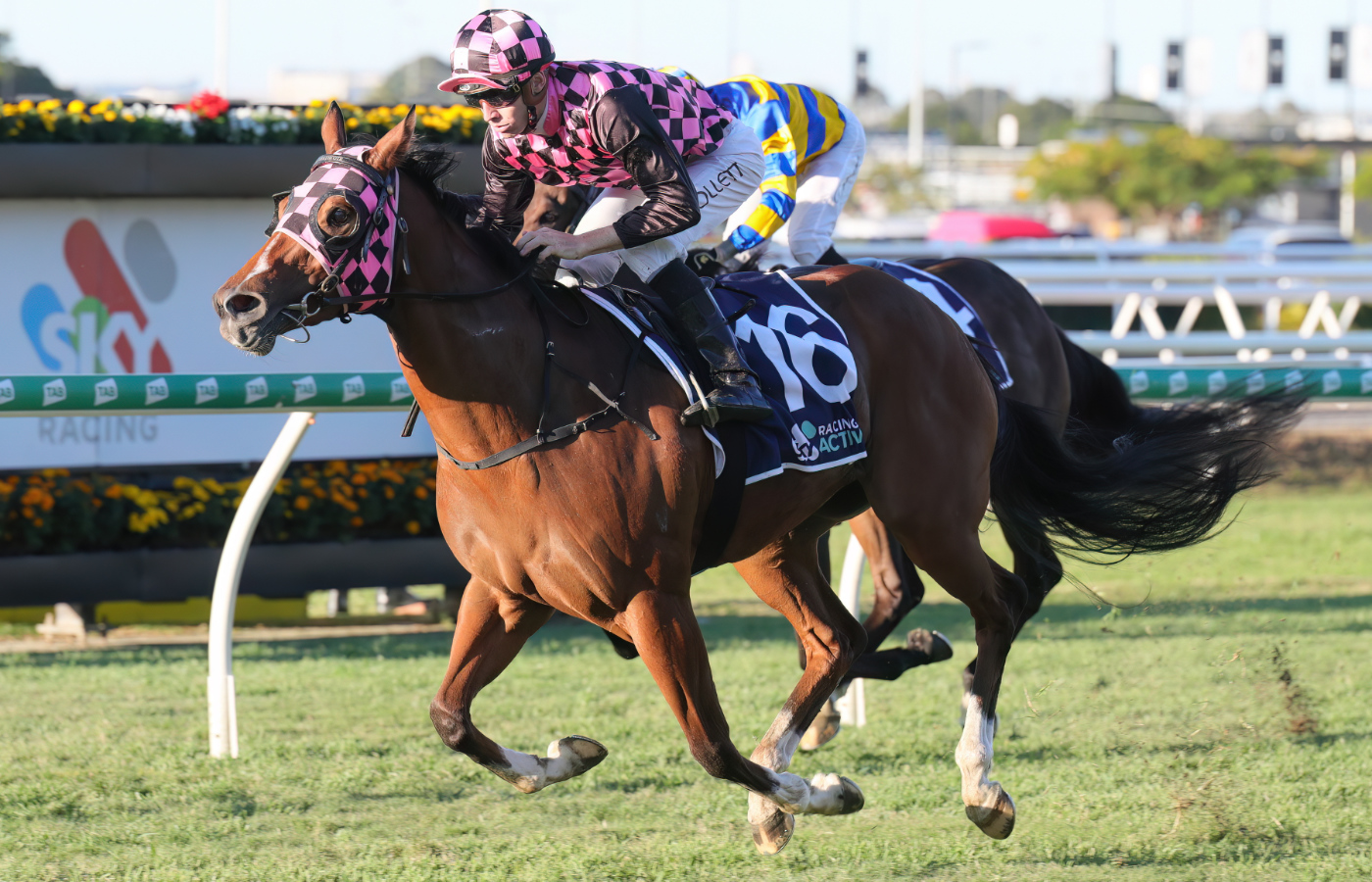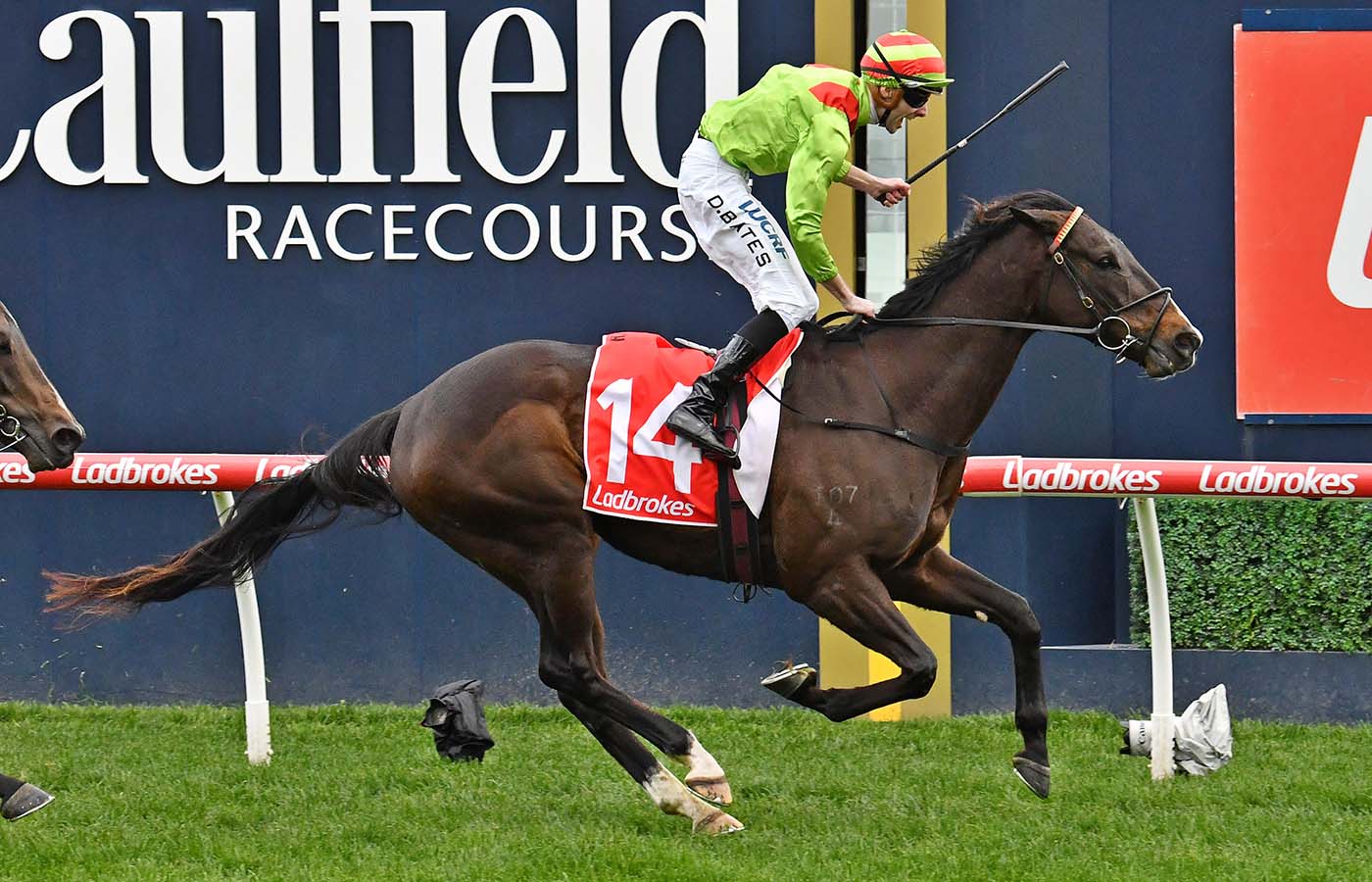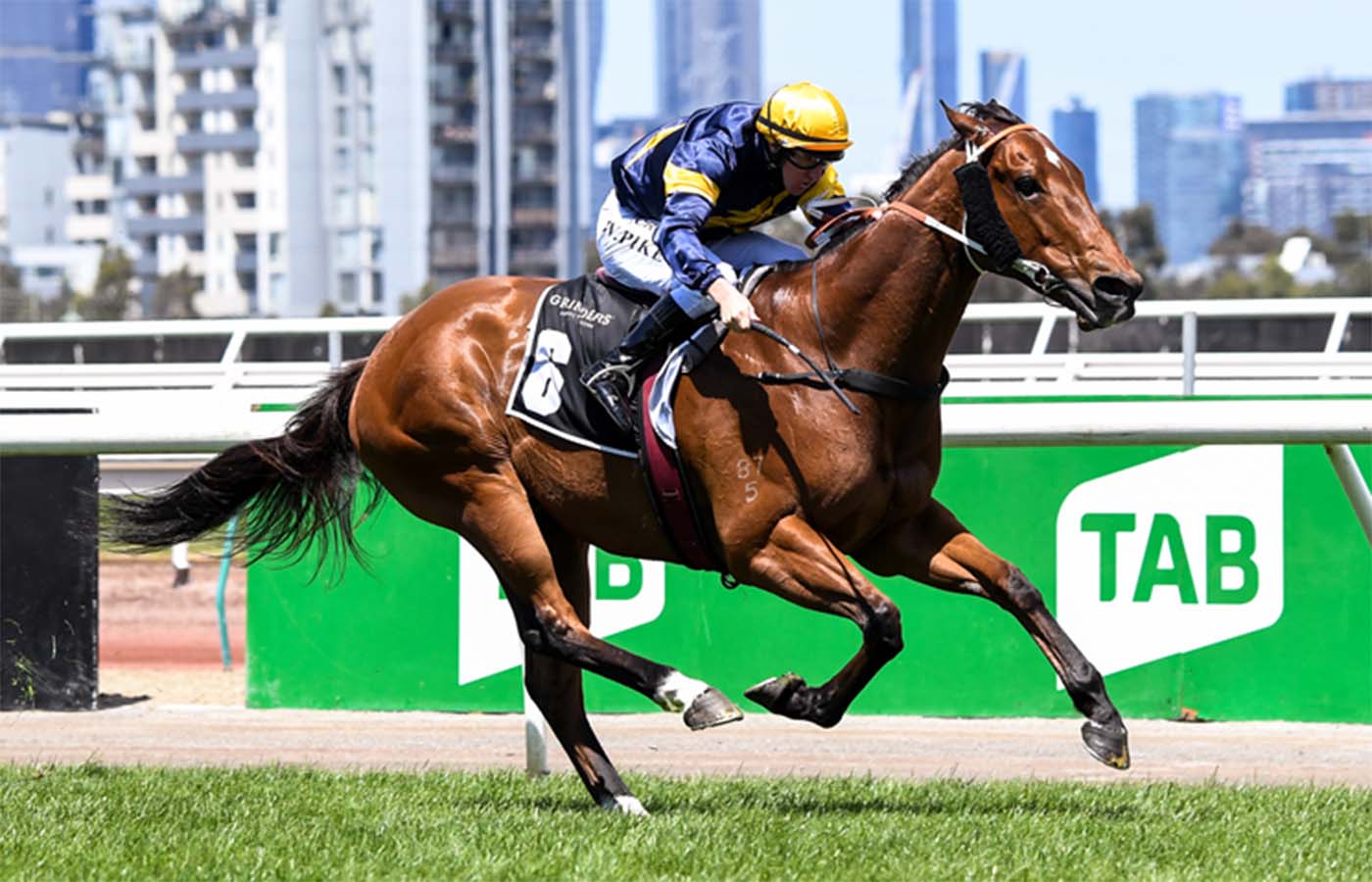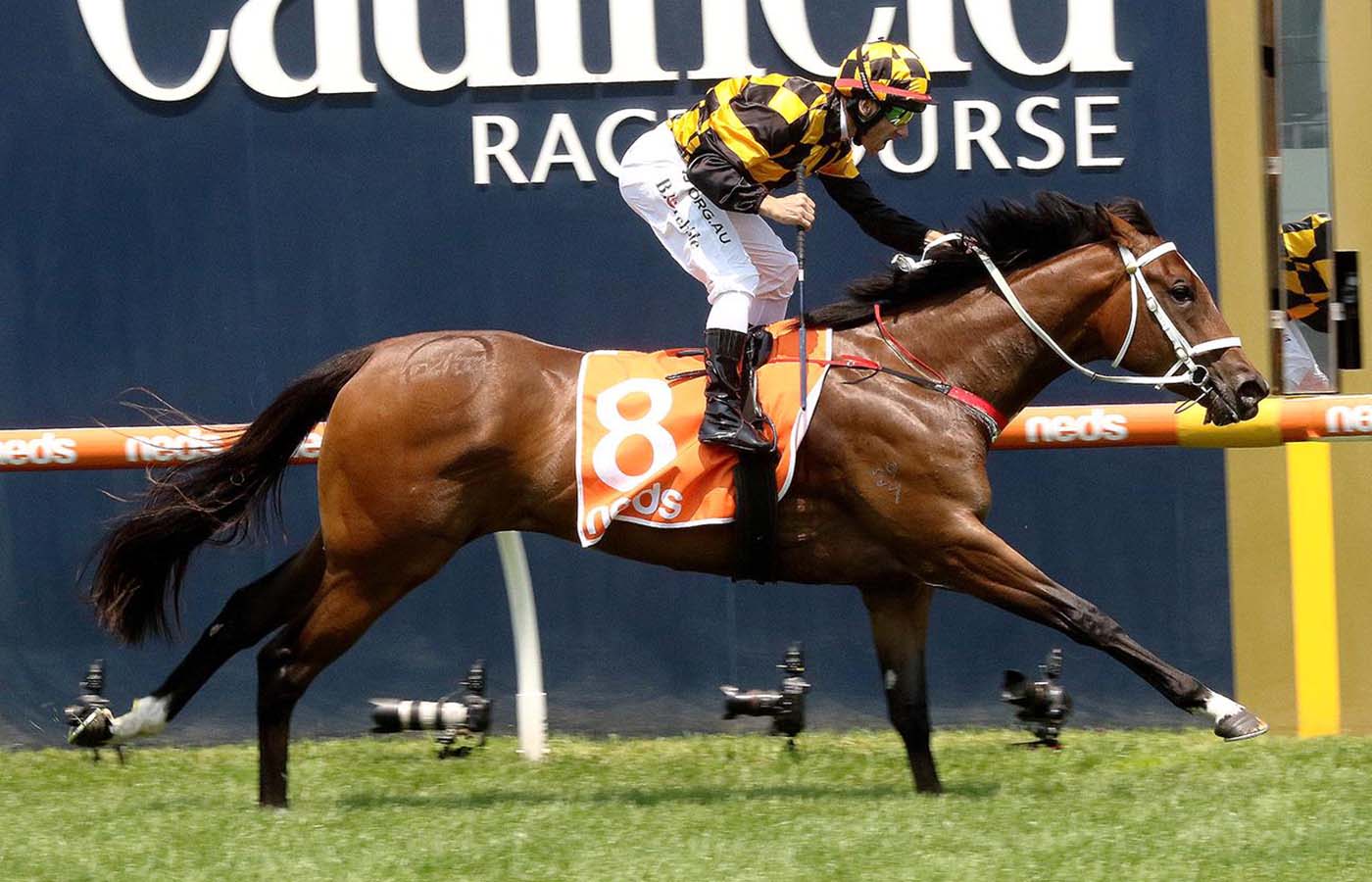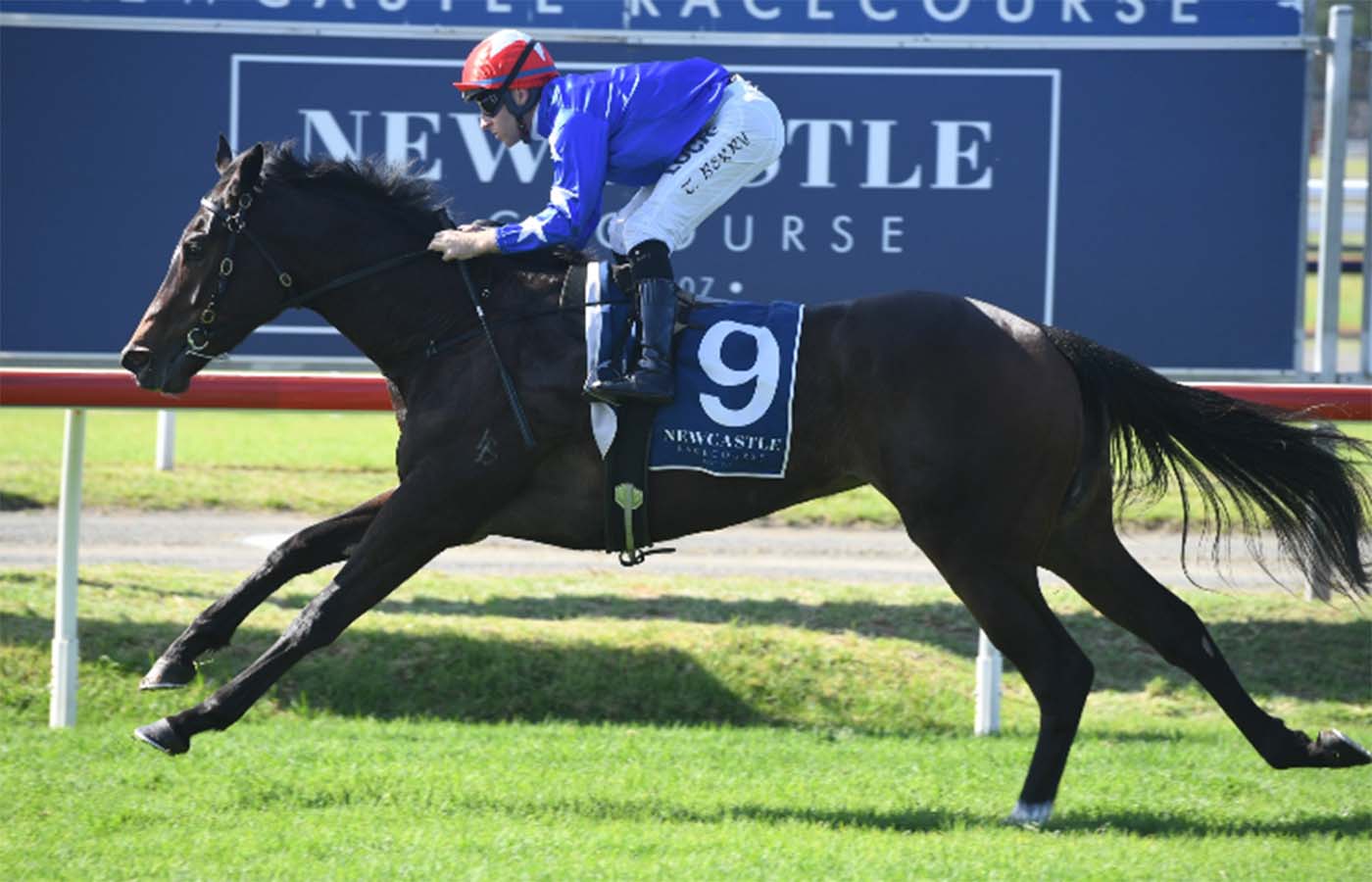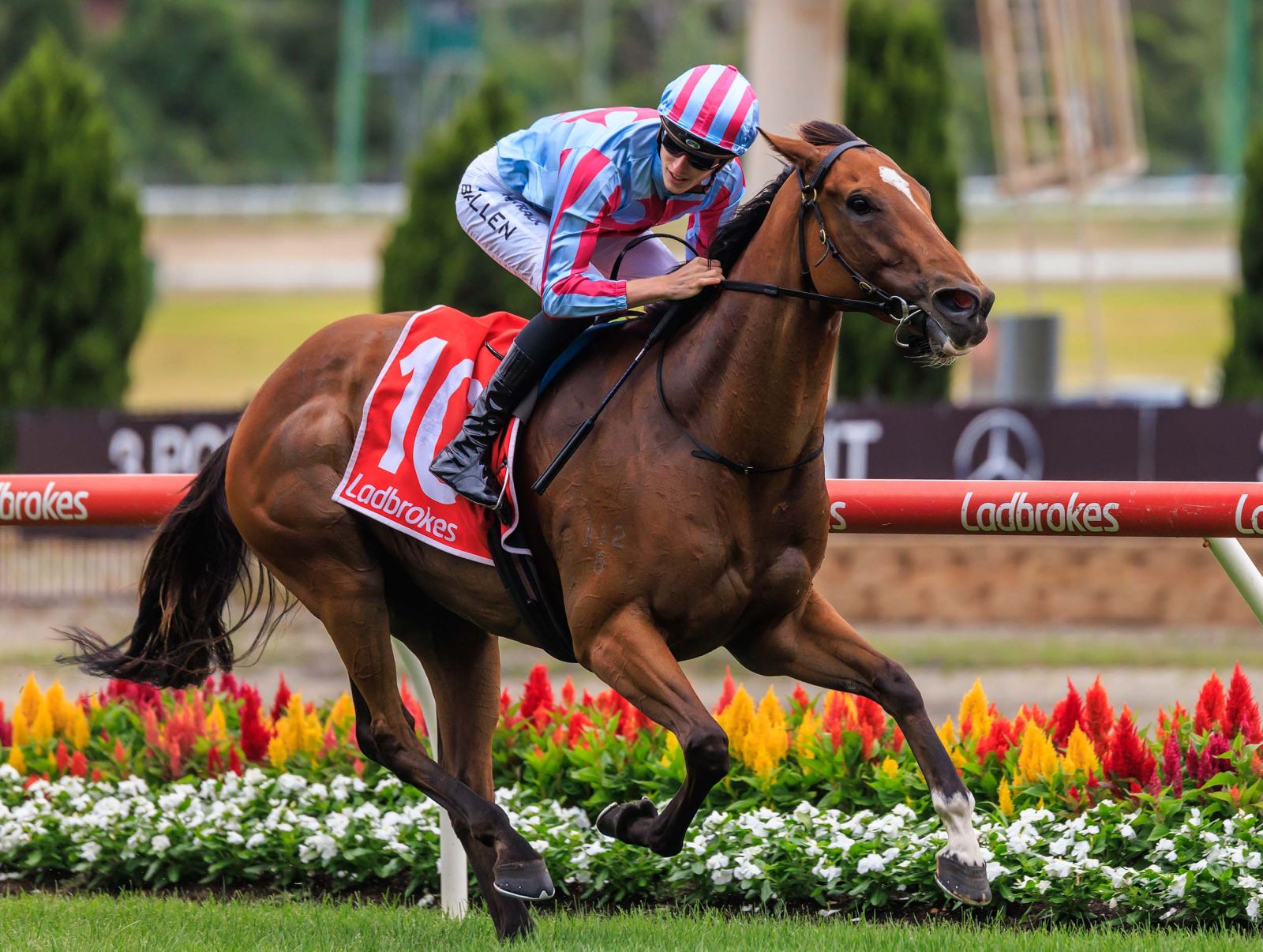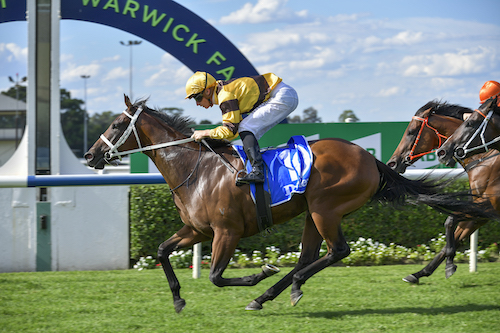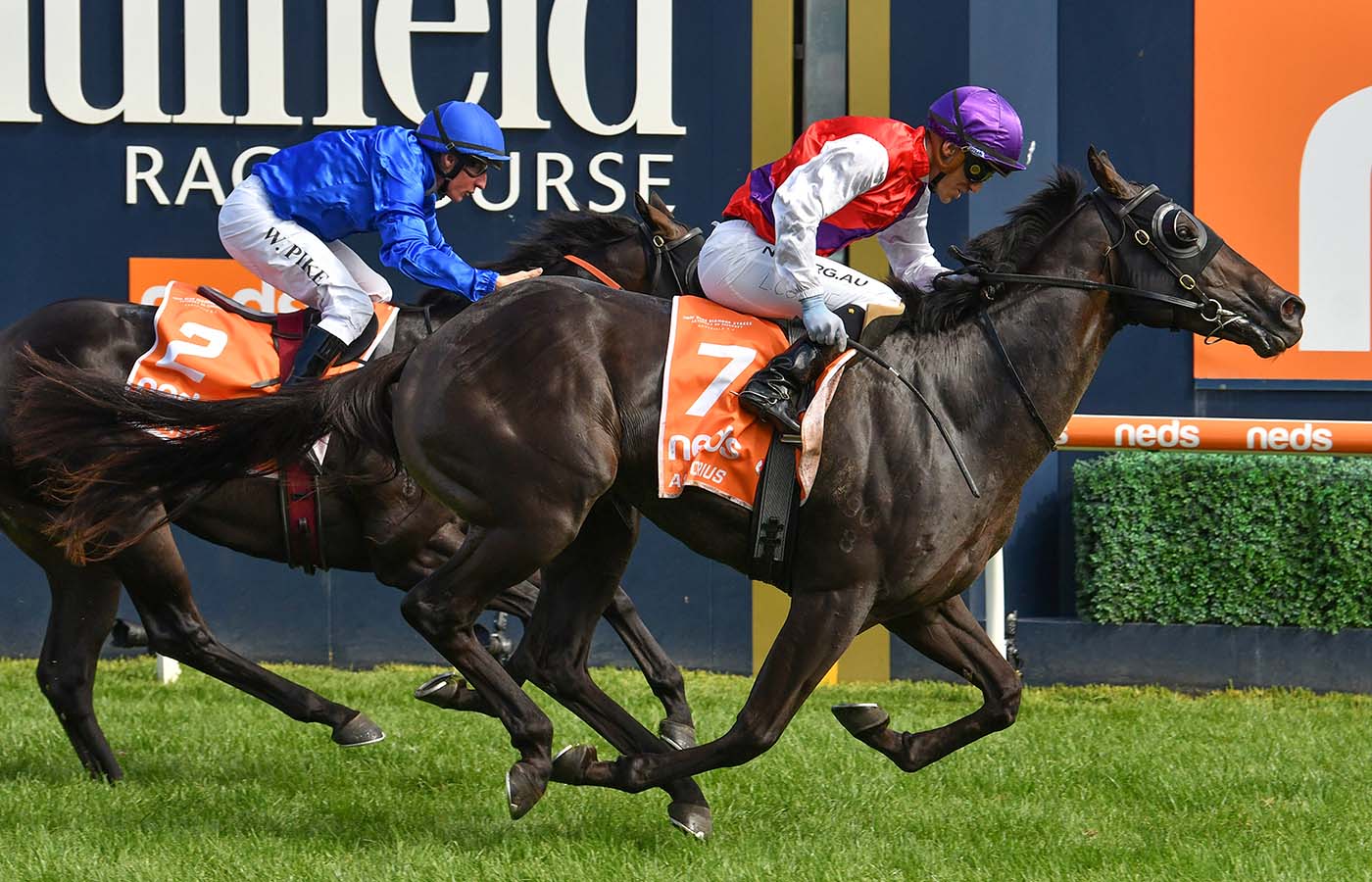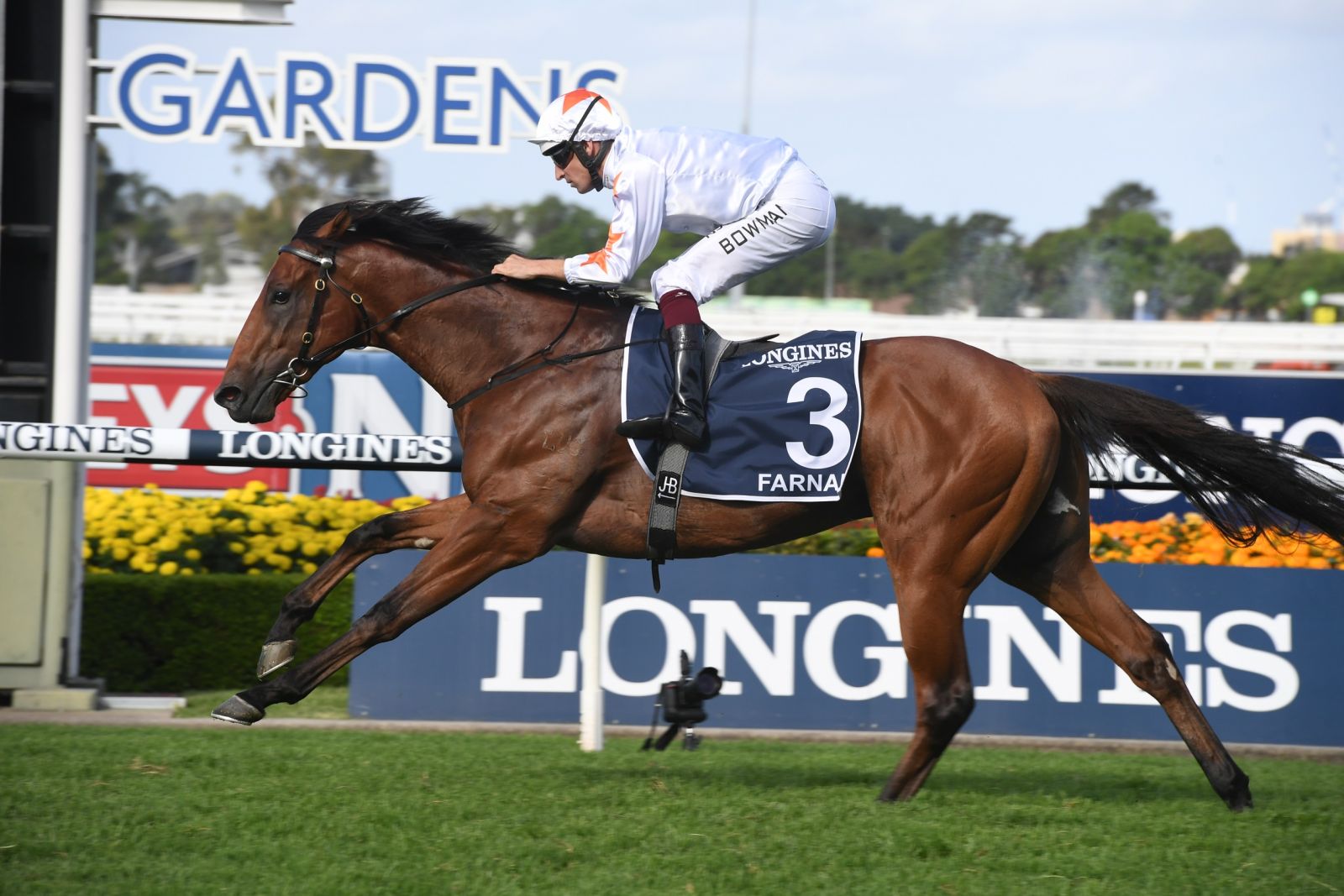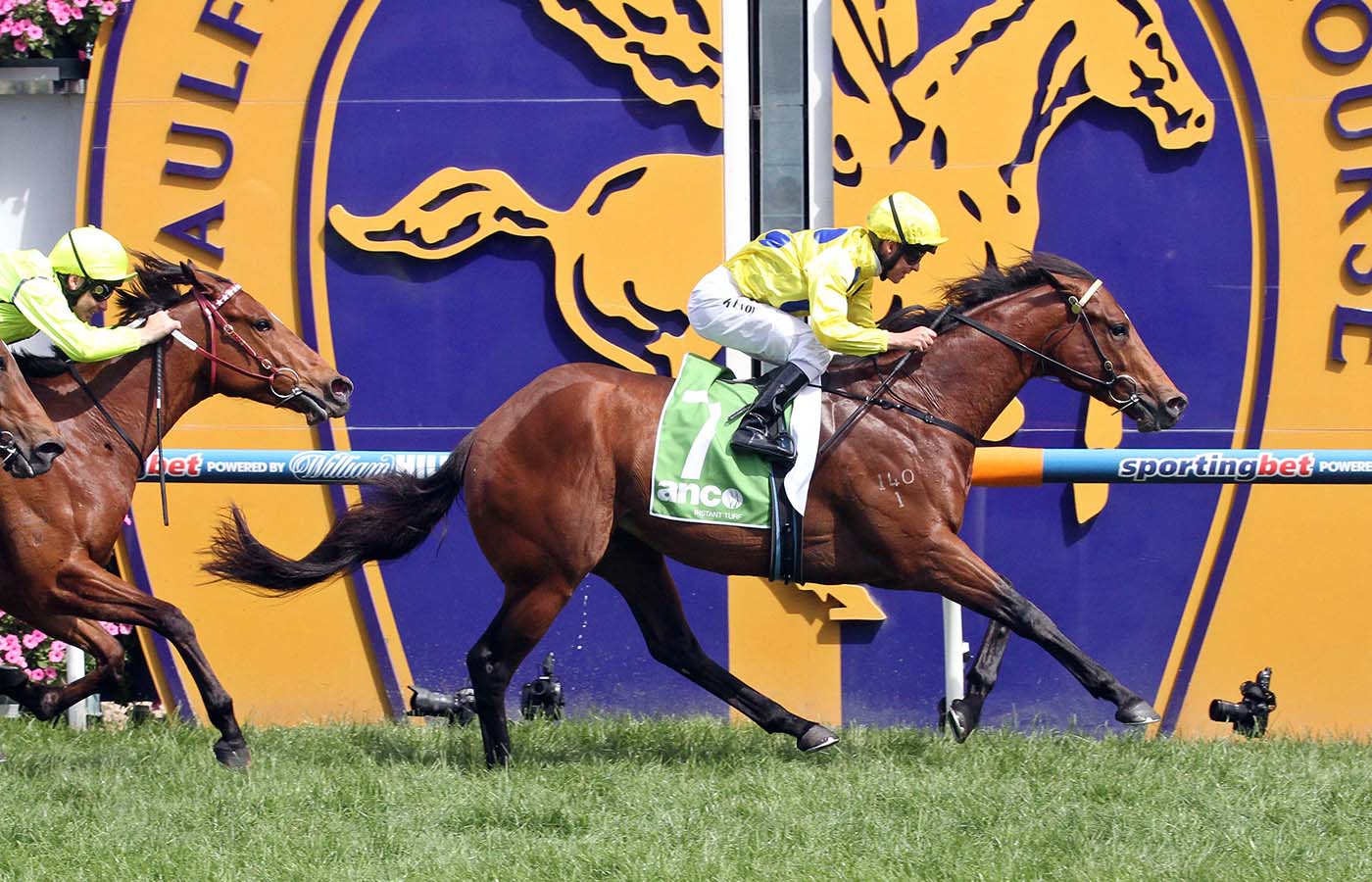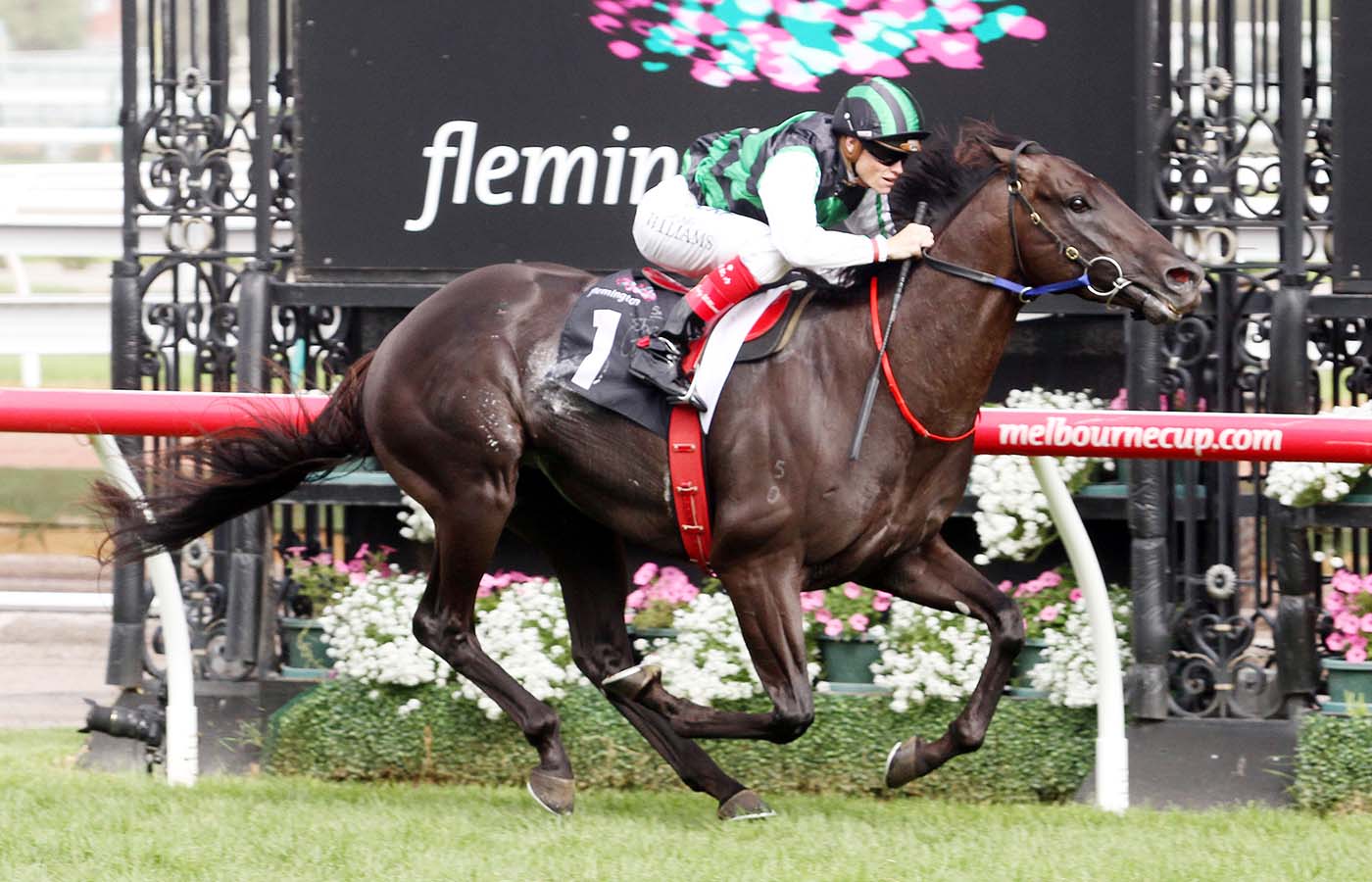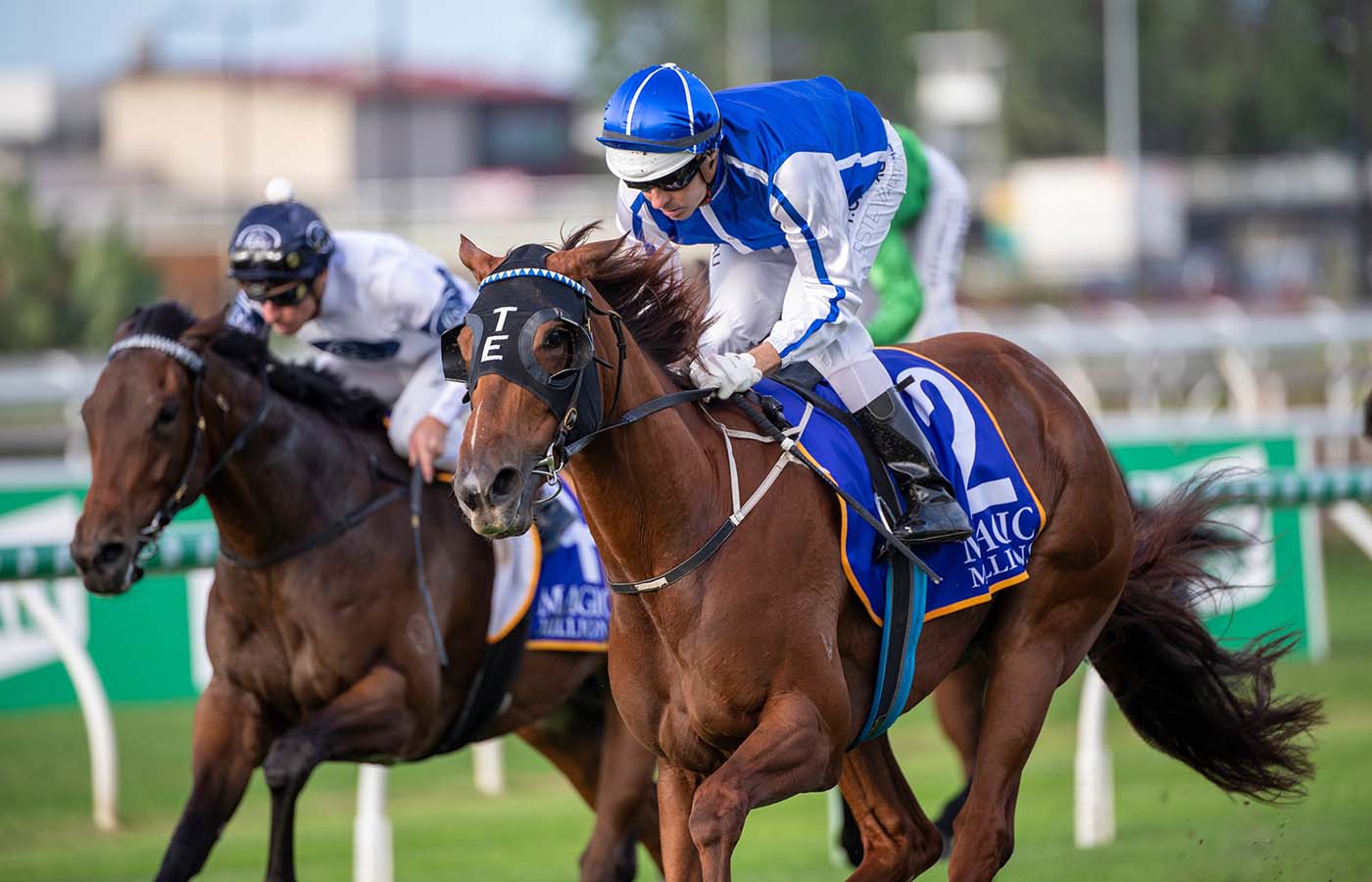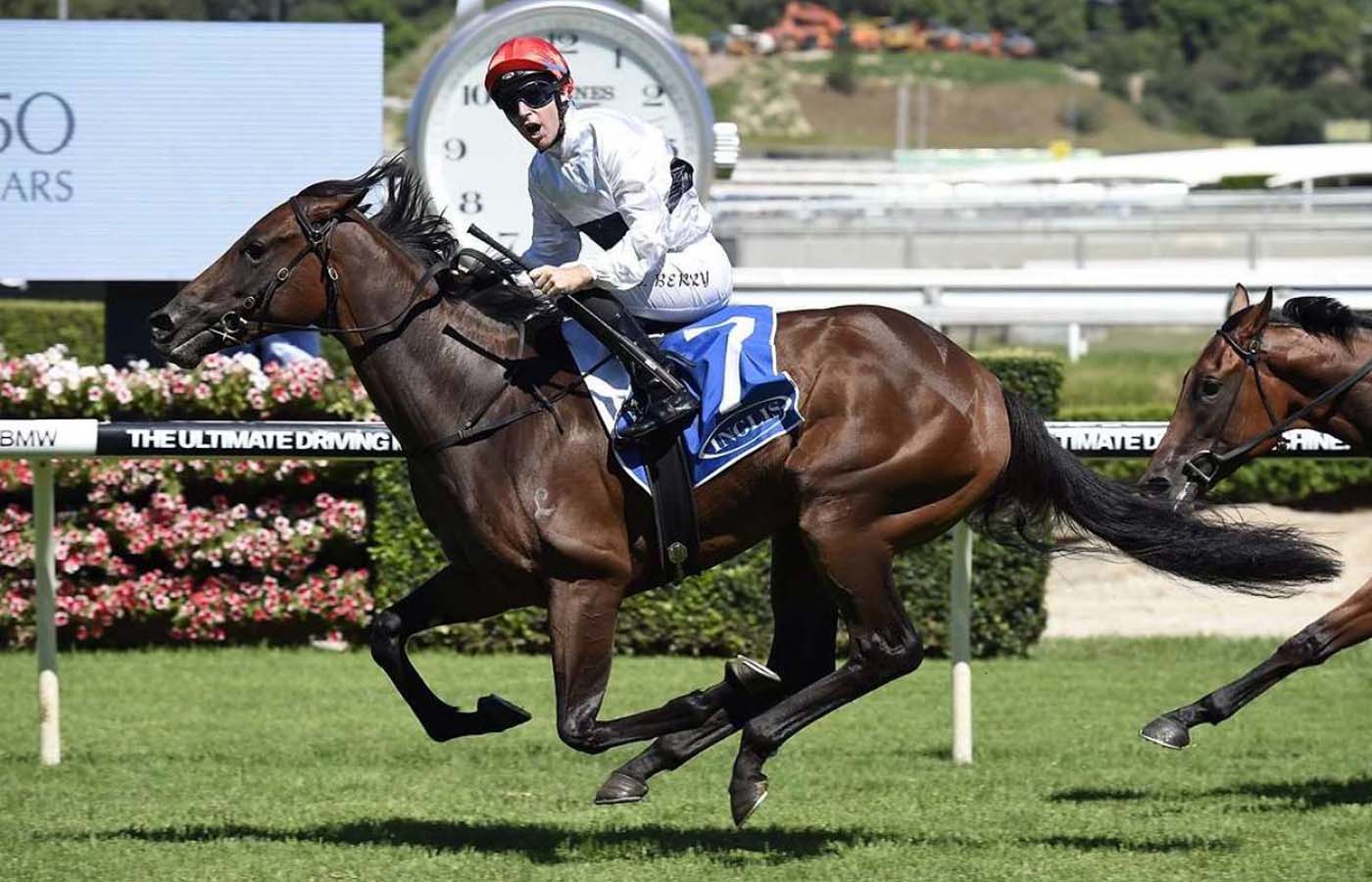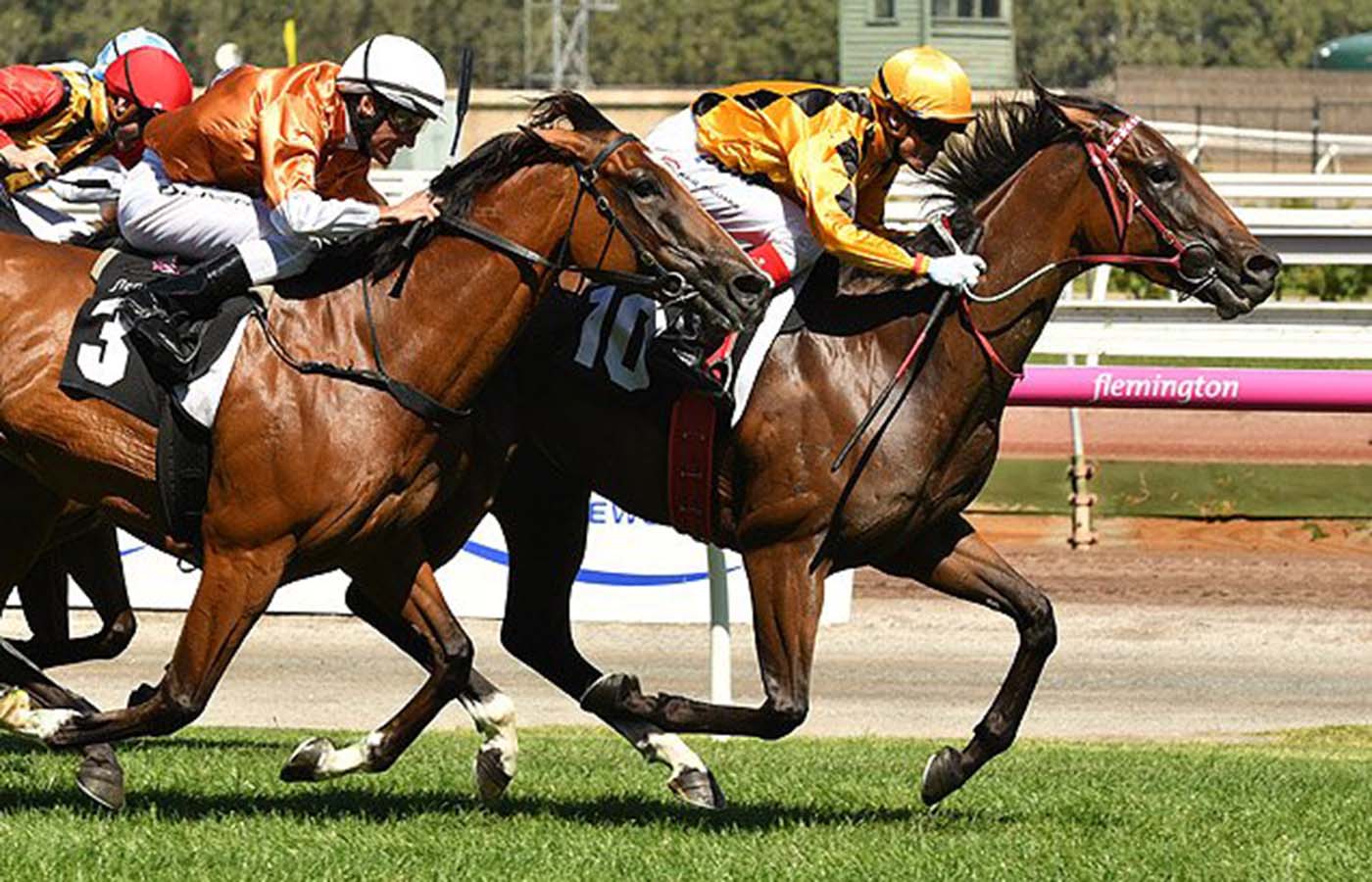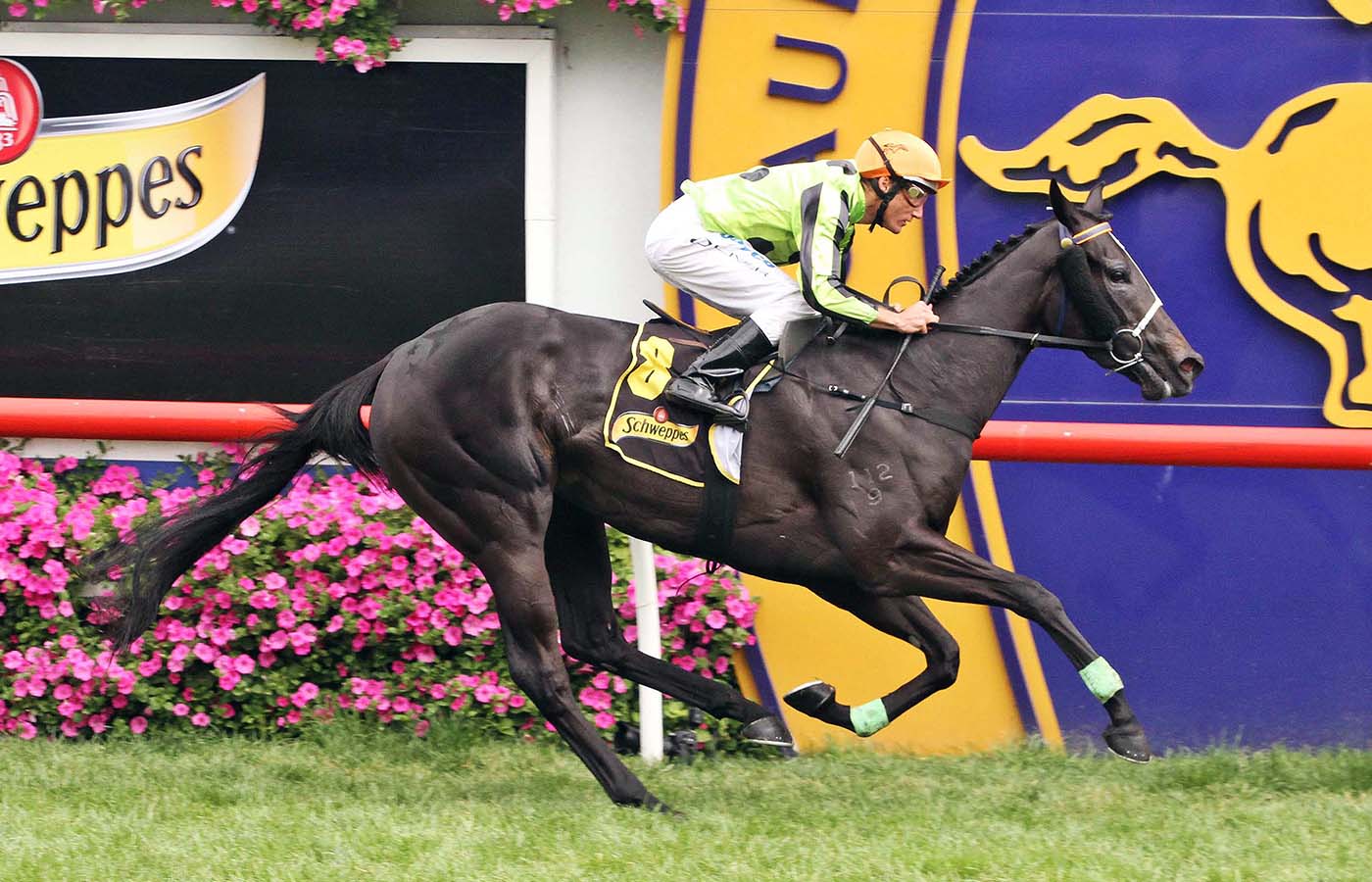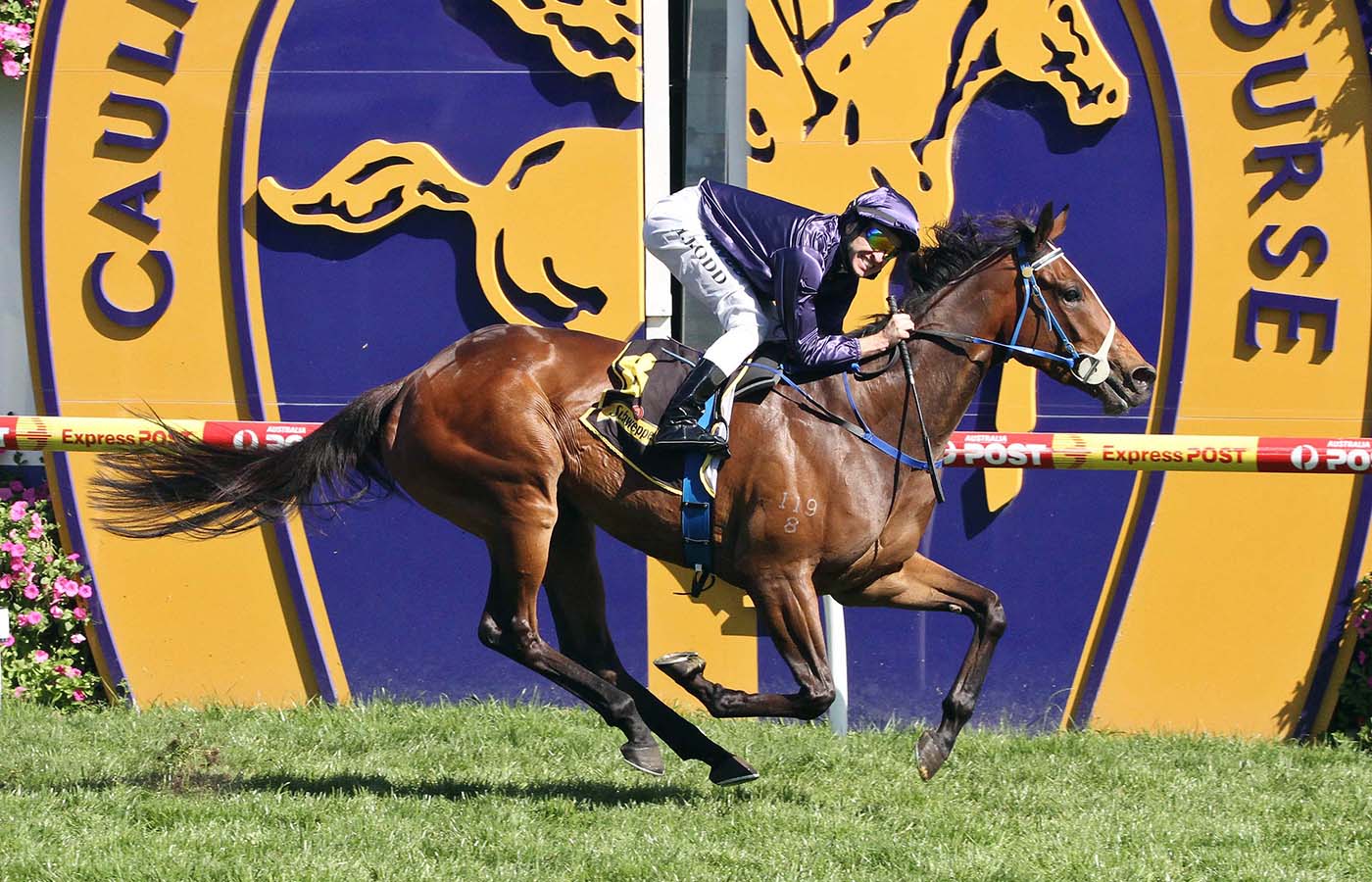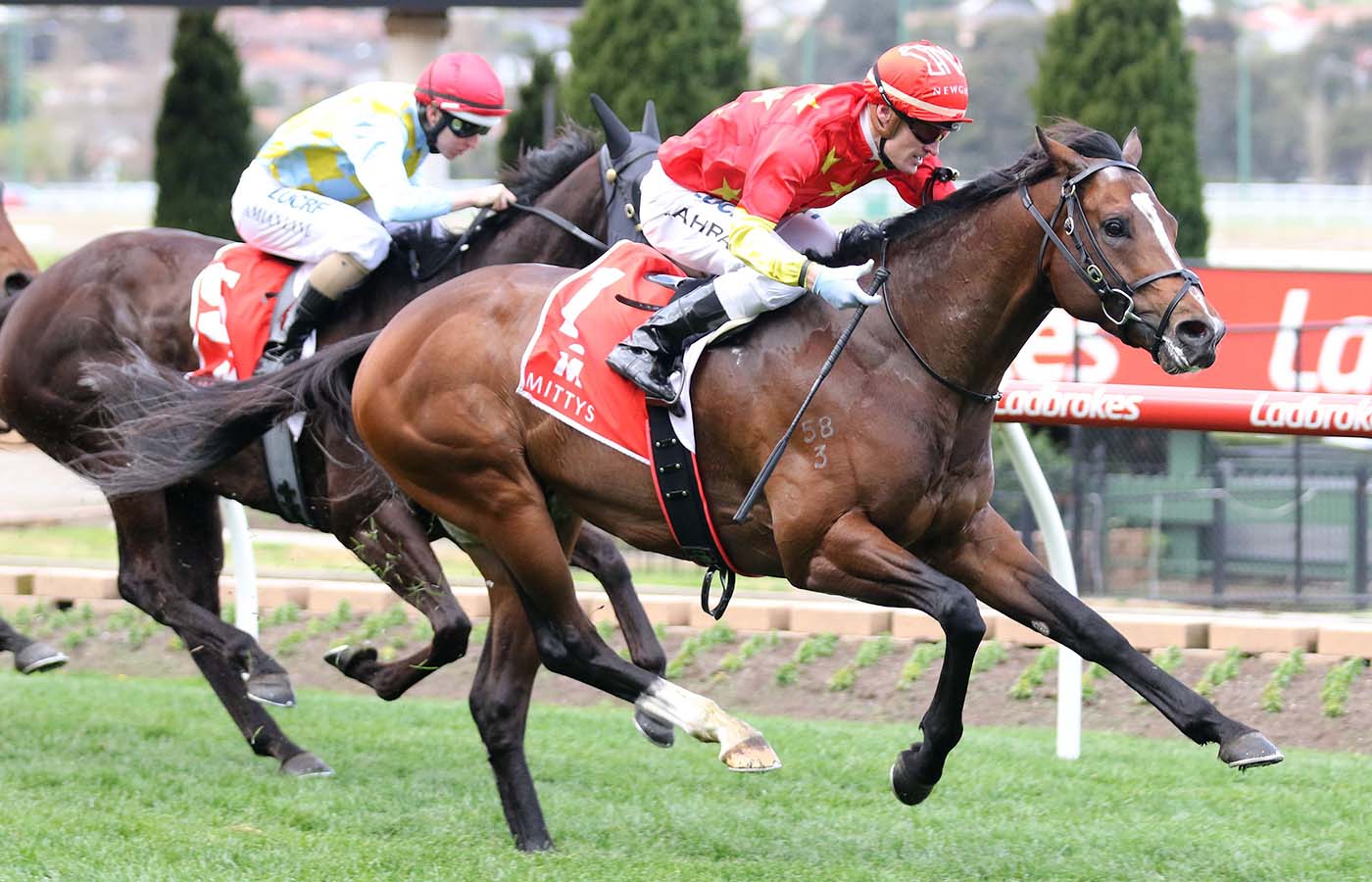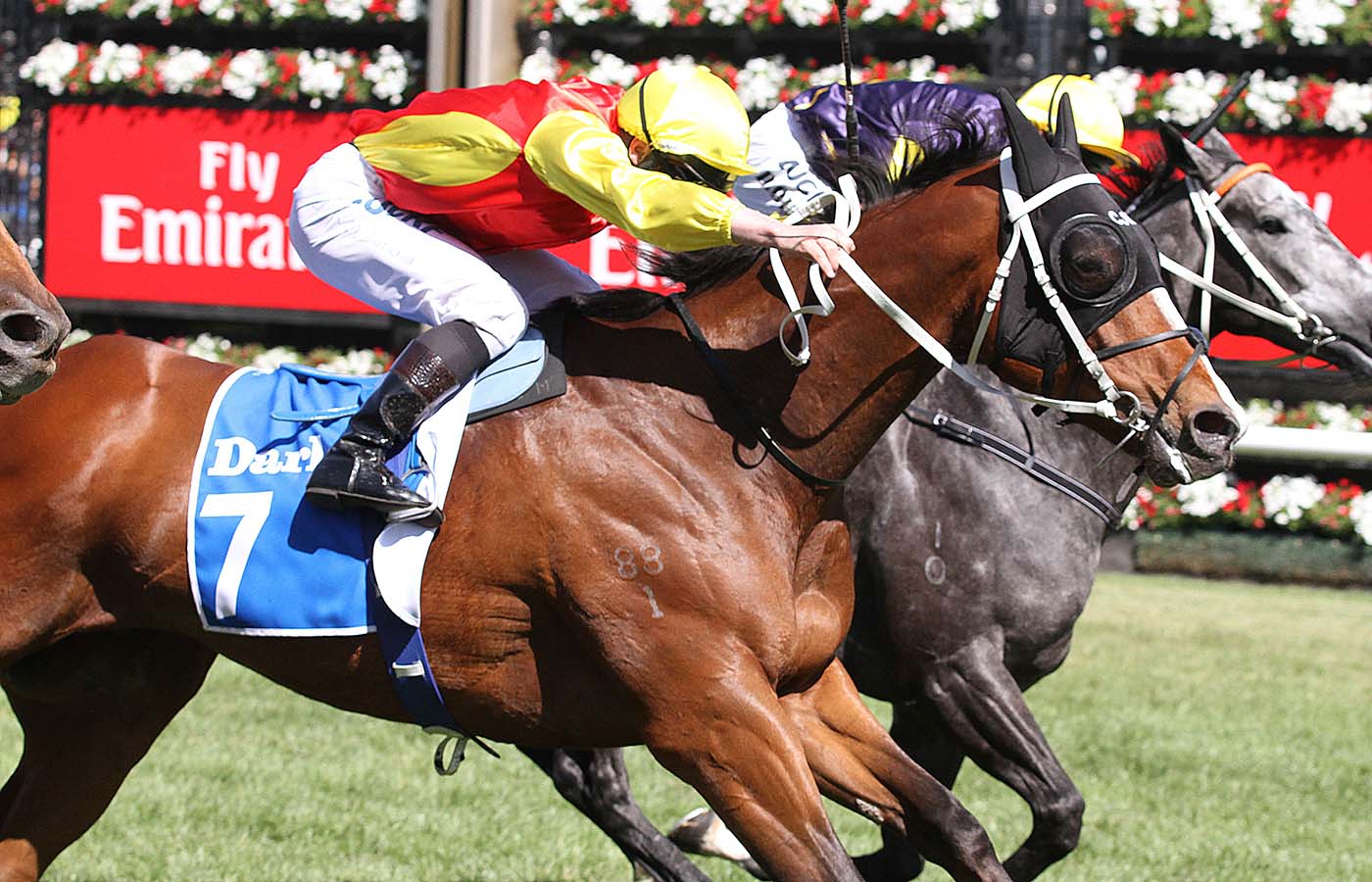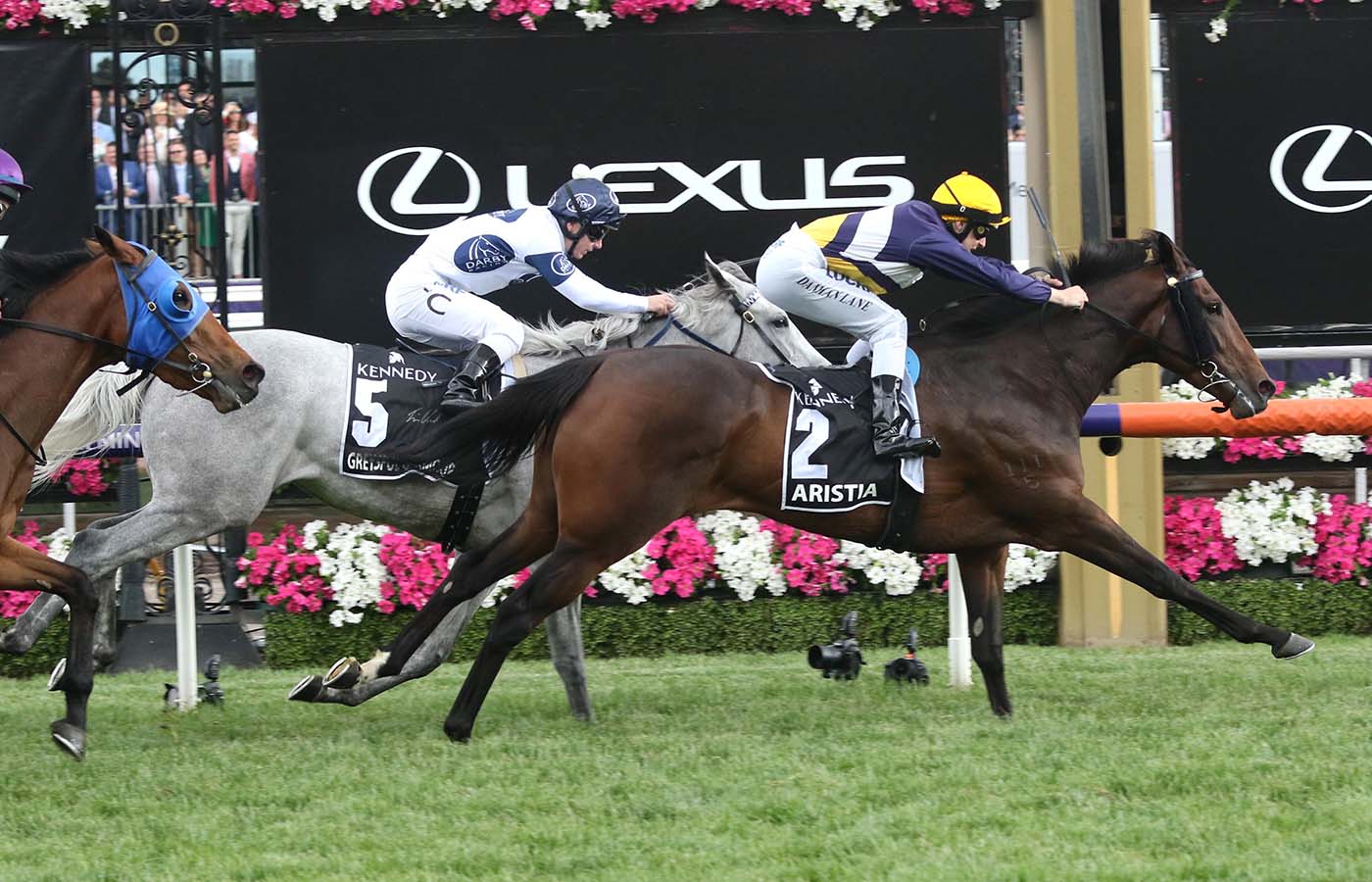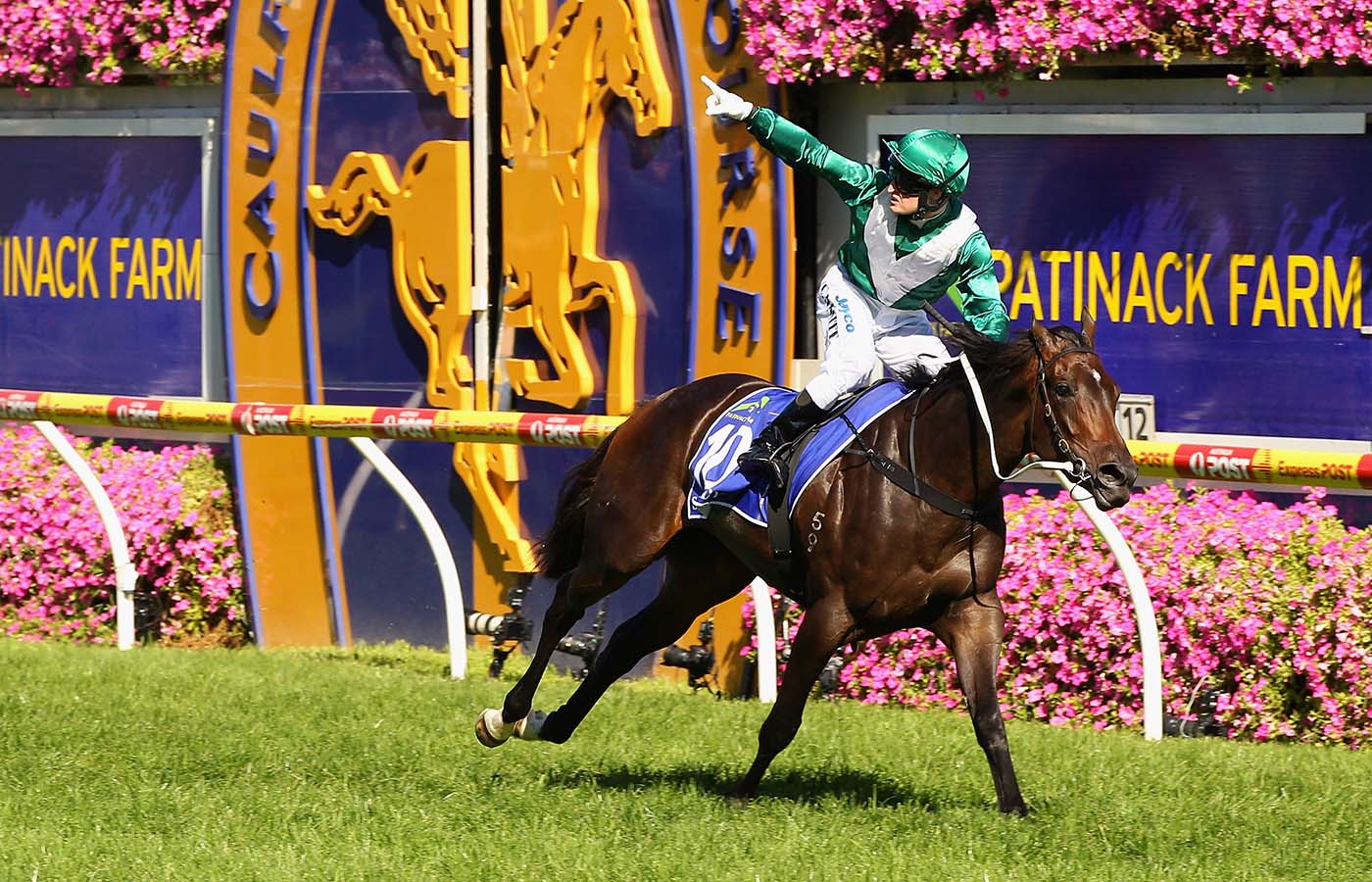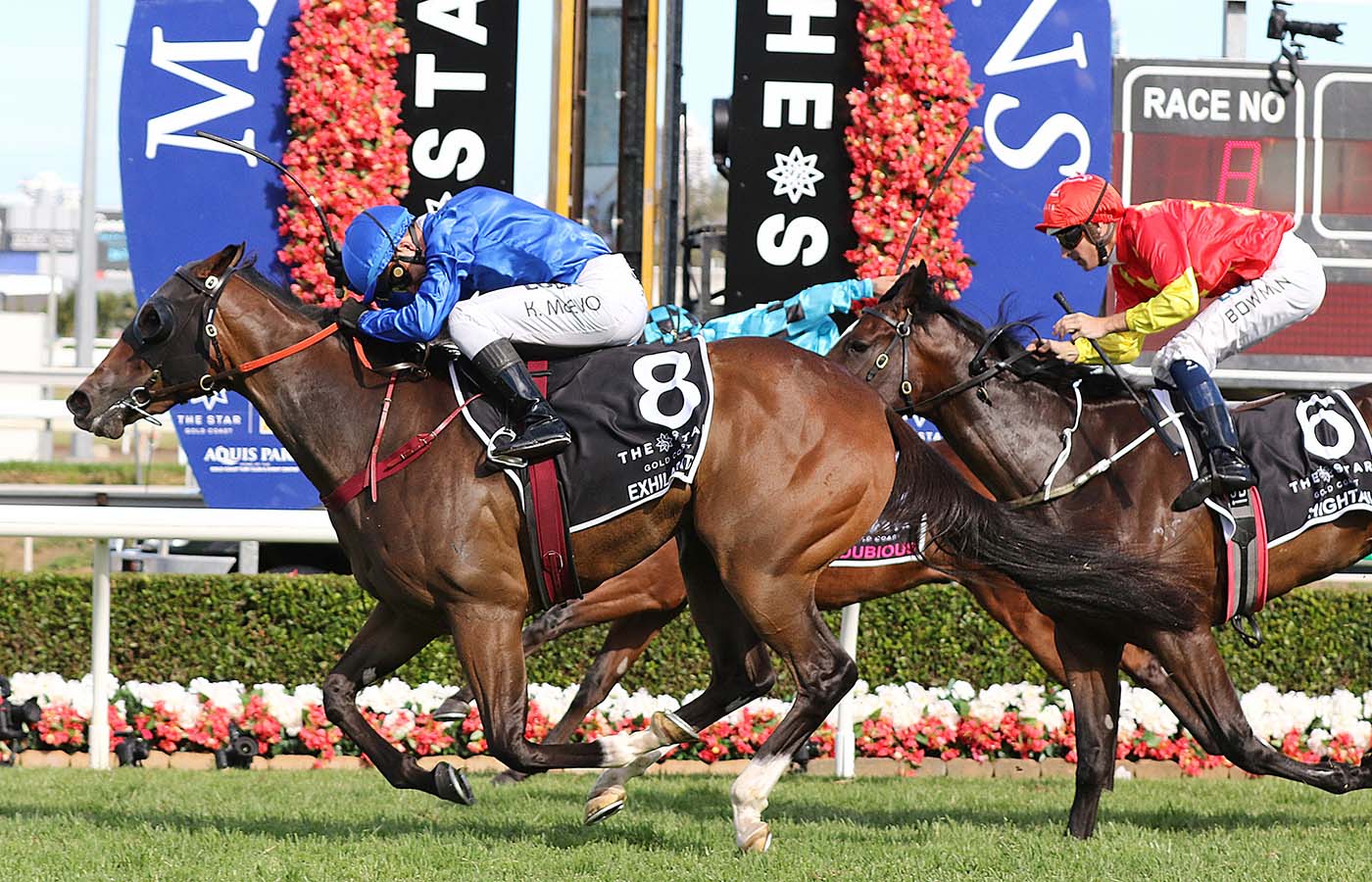“He was a complete racehorse, an amazing horse and an amazing stallion,” trainer Neil Drysdale said of A. P. Indy, the 1992 Horse of the Year and leading sire whose last crop of yearlings are selling this week at the Keeneland September yearling sale.
If there is such a thing as equine royalty, this son of 1977 Triple Crown winner Seattle Slew out of an outstanding broodmare by 1973 Triple Crown winner Secretariat, was it – reports Ray Paulick in the Paulick Report.
He possessed an outstanding pedigree, was the most sought-after foal of his generation, and then went out and showed truly how good he was in two racing seasons and nearly 20 years at stud. A. P. Indy was retired from breeding in 2011.
Bred in Kentucky by William S. Farish and W.S. Kilroy, A. P. Indy was produced from Weekend Surprise, a graded stakes winner and eventual Kentucky Broodmare of the Year. Out of the graded stakes-winning Buckpasser mare and outstanding producer of multiple stakes winners, Lassie Dear. Weekend Surprise was represented in the spring of 1990 by the Storm Bird ridgling Summer Squall, the Preakness winner and Kentucky Derby runner-up who would win nine stakes for Dogwood Stable before his racing career was over.
The 1989 Seattle Slew foal out of Weekend Surprise was entered by Farish’s Lane’s End Farm in the following year’s Keeneland July selected yearling sale, and he was the “talking horse” of the auction. D. Wayne Lukas wanted him for one of his clients, but Noel O’Callaghan of BBA Ireland outlasted the high-flying trainer with a winning bid of $2.9 million to top the sale. A half-hour earlier, O’Callaghan bid $2 million to purchase a colt by the Mr. Prospector stallion Fappiano out of Taminette, a classy daughter of In Reality who was a multiple graded stakes winner and million-dollar earner. They were the two-highest priced colts sold at that year’s Keeneland July sale.
Both horses were purchased by BBA Ireland on behalf of Japanese businessman Tomonori Tsurumaki, who earlier in the year spent $500 million to open a Formula One-style auto racing track in southern Japan. He named both A. P. Indy and the Fappiano colt A P Jet in honor of the track, Autopolis.
A year earlier, Tsurumaki was making headlines at an auction of a different kind, when he made the winning bid of $51.3 million for the Piccasso painting Les Noces de Pierrette. Coincidentally, the painting was sold by Joan Whitney Payson, whose family operated the famed Greentree Stable (and also owned Major League Baseball’s New York Mets).
Both colts turned out to be winners. A P Jet was sent to Japan, where he won over $1.4 million and was a graded stakes winner. A P Jet eventually came to the United States to stand at stud, where he was a leading sire in New York.
A. P. Indy stayed in the United States. Immediately after O’Callaghan signed the ticket for the colt, he indicated A. P. Indy would be trained by Rick Mettee, a young California-based conditioner who at the time had another horse of Tsurumaki’s in his stable. “I’ll believe it when they lead him into my barn,” Mettee said at the time. That never happened.
Instead, A. P. Indy was turned over to Neil Drysdale, a native of England who previously had served as assistant to Charlie Whittingham and had handled such top horses as Princess Rooney, Tasso, and Forceten en route to a Hall of Fame career.
Drysdale took his time with the colt, getting him to the races during the Del Mar meeting where he finished fourth sprinting in his debut. It was discovered an undescended testicle was bothering A. P. Indy that day, and it was surgically removed – a procedure, thankfully, that had no impact on him as a future stallion. He then won three successive races, culminating with a G1 victory in the Hollywood Futurity.
A. P. Indy won both of his starts on the road to the Kentucky Derby – the G2 San Rafael Stakes and G1 Santa Anita Derby – but a highly anticipated match-up at Churchill Downs with the previous season’s 2-year-old sensation Arazi fell through when a dejected Drysdale announced on Derby morning that A. P. Indy would be scratched because of a blind quarter crack in his left front foot.
Drysdale regrouped as farrier Joey Carroll rebuilt the hoof wall with acrylics, and A. P. returned with a workmanlike victory three weeks later in the G2 Peter Pan Stakes. He won the G1 Belmont Stakes, too, beating English import My Memories by three-quarters of a length, then was pointed to a fall championship campaign.
After the worst race of his career (a fifth-place finish in the G2 Molson Export Million at Woodbine), A. P. Indy took on older horses for the first time in the G1 Jockey Club Gold Cup. But a terrible start in which stumbled badly coming out of the gate eliminated his chance for victory. He wound up third behind Pleasant Tap and Strike the Gold.
Worse, A. P. Indy ripped the shoe of one of his feet when he went to his knees. “There wasn’t much foot left,” Drysdale recalled. “Fortunately, acrylic had just been developed, and Joey Carroll rebuilt his foot that night.”
A.P. Indy withstood the next three weeks of training as the Breeders’ Cup Classic at Gulfstream Park approached. Under his regular rider, Hall of Famer Eddie Delahoussaye, who never uncocked his whip, A. P. Indy maneuvered through heavy traffic around the final bend, lowered his head with that distinctive rhythmic stride and pulled away to win the Classic by two lengths over Pleasant Tap, with the European filly Jolypha third.
It was A. P. Indy’s eighth career win in 11 starts and boosted his earnings to $2,979,815. He won at distances ranging from 6 1/2 furlongs to a mile and a half. He was that rarest of select sale toppers who actually earned more on the racetrack than he brought in the auction ring. “He was a strong-willed horse, very strong-willed, and he had his own mind,” Drysdale recalled. “Once he got the hang of things, though, he was exceptional.”
AT STUD:
For A. P. Indy, a second career in the breeding shed would have even more lasting significance than his Hall of Fame days on the track.
He entered stud at Lane’s End after being crowned 1992 Horse of the Year. His owner, Tomonori Tsurumaki, wasn’t as fortunate, his company going through bankruptcy the following year after the failure of the Autopolis to land a major Formula One event. But the Autopolis, in a strange way, lives on through its Thoroughbred champion namesake.
A.P. Indy became a top stallion quickly, leading all North American sires in progeny earnings in 2003 and 2006. The dark bay or brown horse was North America’s leading sire of sale yearlings based on average price in 2007, 2010, and 2011. He ranked second in 2004, 2005, and 2008. In 2005, 22 of his offspring averaged $925,773, a career high for the stallion.
A.P. Indy’s progeny “weren’t always the most attractive horses, but you learned to like them because they performed,” Headley Bell of Mill Ridge Sales and Nicoma Bloodstock told The Bloodhorse.com . “The same thing can be said of the Dynaformers and for plenty of other stallions, that’s also the case. People grow to like them (the progeny) because they perform on the track and they accept the way they are (physically). Overall, the A.P. Indys have quality, but they’re sometimes dipped in the back or back in the knee. They’re not perfect conformationally, but you see that they are consistently fantastic racehorses.”
Two years ago, with his fertility rate in decline, A.P. Indy retired from the breeding shed at the age of 22.
“It hasn’t really sunk in yet that this is the last group of his yearlings,” said Lane’s End’s Bill Farish. “For some reason, it doesn’t feel like the end because there are so many sons of his (at stud). It’s obviously something we’ve been knowing was coming. It’s something that happens, unfortunately. But it’s rare that you lose one that is as good as he is.”
Even though A.P. Indy has been extremely successful as sire, Farish wasn’t anticipating an explosion in prices for the stallion’s final offspring. But there was no doubt, in his mind, that they would be popular.
“You don’t usually see a big bounce in the last group of horses even though you think you would,” Farish said. “In his case, buyers certainly have had a lot of years to look at them (his progeny) already. But I’m sure there will be buyers who know that it is the last chance to get one of them. A.P. Indy has been such a good broodmare sire and a sire of sires that they’ve got to think that they have every chance with one down the road.”
Said Reiley McDonald of Eaton Sales: “A.P. Indy is arguably one of the great American classic sires. There won’t be any more of his yearlings after this year, so this is a great time for people to jump in and buy. It’s the last chance.”
At stud, A. P. Indy has sired champion fillies and colts, led the sire lists by earnings of his offspring on the racetrack and commercial prices at yearling sales. But his biggest impact will be felt for years to come as a sire of sires through his sons and his grandsons.
The complete racehorse and sire, indeed.

